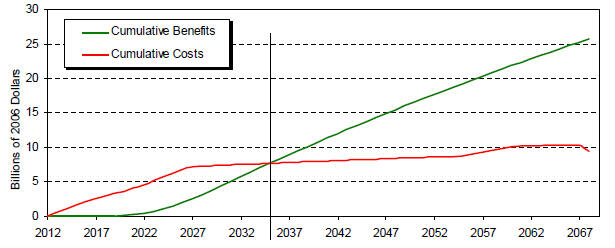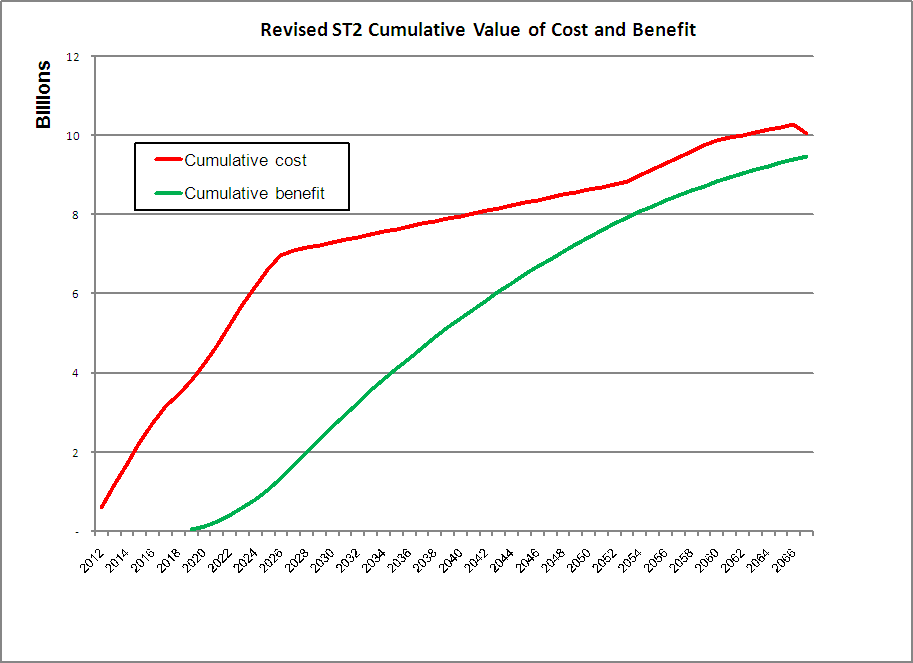![]()
![]()
Originally published, October 2008
![]()
Examination of Sound Transit's newly released benefit-cost work shows that Sound Transit has duplicated last year's methodology and assumptions. The earlier work was part of a reckless push for light rail expansion in 2007. The same pattern of false justification continues in 2008.
In 2007 John Niles of Public
Interest Transportation Forum analyzed Sound Transit's earlier and still current
methodology for summarizing benefits and costs. He deconstructed ST's work to
reveal five bad assumption, and then reconstructed it using the same spreadsheet
with more reasonable and responsible assumptions. This examination showed that
the expanded light rail construction and operating costs would exceed the
benefits of raising taxes and proceeding with this project.
Benefit-cost analysis is an economic tool used to measure the relative
difference between the benefits and costs of projects or investments. Public
investments generating benefit-cost ratios greater than one are considered
justifiable.
Sound Transit now shows this graphic for how it claims costs and benefits accumulate for the largest of its expansion options, similarly computed in 2007:

Notice how in the Sound Transit version of the future shown above, cumulative benefit (green line) finally exceeds cost (red line) in about 2035. But the next picture is how the project is more likely to turn out:

In the more realistic case shown in the second graph, calculated with more reasonable assumptions documented here, benefits (green line) never catch up with costs (red line)!
The Sound Transit study’s methodology compares expanding transit with taking no action. The benefit-cost analysis prepared by Parsons Brinckerhoff for Sound Transit included analysis of three transit expansion options: a 20-year plan developed last year that would add more than 50 miles of light rail service to the region (shown above in the two graphics), and two new 12-year options adding 18 to 23 miles of light rail and increasing commuter rail service.
Benefit-cost analysis of projects costing more than $100 million is required by the Puget Sound Regional Council (PSRC) as it reviews conformity with the regional transportation plan, a state mandate.
Oddly, PSRC does not care what
the analysis reveals about benefits and costs, only that an analysis is
prepared.
Sound Transit's analysis in both 2007 and 2008 assesses the impacts of new
transit on travel patterns in the region in five categories:
Number of new transit riders, travel time savings for new and existing transit riders, savings in vehicle (highway) miles traveled due to new transit riders, paid parking saved for new transit riders, and reduction in delay caused by traffic congestion.
Niles found that Sound Transit was too generous in estimating the number of new future transit riders as well as in the estimation of reduced miles traveled and consequential delay reduction on the highways after expanded light rail is in operation. Sound Transit's analysis produced the absurd claim that benefits for highway users with future light rail would exceed benefits for transit riders, in a direct contradiction with all earlier Sound Transit environmental analysis and earlier claims of ST leadership.
Furthermore, Sound Transit ignored the warnings of its Citizen Oversight Panel and others that future transit operating and maintenance expenses are being underestimated. See a presentation of this issue of operating and maintenance costs to the State Auditor.
Correcting these errors of assumption and two others as described by Niles in a published critique available here reverses the positive results claimed by Sound Transit to the point that costs exceed benefits.
The full benefit-cost analysis according to Sound Transit in 2008 is available here.
![]()
Return to the Public Interest Transportation Forum home page.
![]()
Last modified:
June 18, 2011